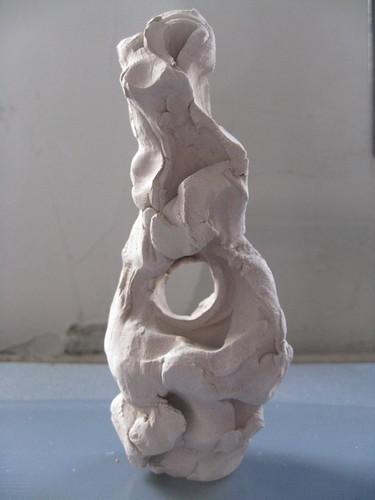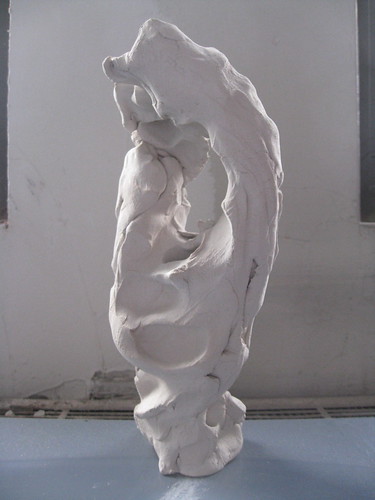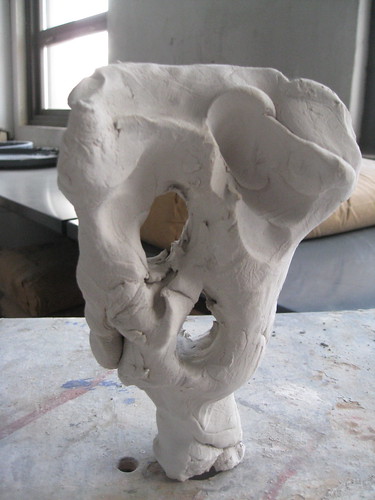A whole series of questions attacked me this morning right before I got up, thinking about these empty spaces. Why do I keep making them? What do they mean?
Clay presents problems at every turn. How to support the structure? How to get it to the kiln? How to treat the surface? How to transport it home? I guess these seem like pretty trivial questions but they are connected to larger, more systemic problems.
For example, how to coordinate everyone's kiln use? How to use the kiln most effectively? How to stay cheerful and support the studio team when we might not all be on the same page, the same schedule, or share the same goals?
Problem solving from the inside: Sometimes I wake up at 3 AM with my mind boring into a problem, like a huge drill making a tunnel through a mountain. I don't usually come against a rock wall but pretty often the hole just keeps getting deeper and narrower until not much good comes of it. The good is that I am figuring out a problem by going deep into it, learning the details, staying focused, pushing for a goal. But quite literally "tunnel vision" is the risk.
Problem solving from the outside: Another idea is to climb around the hole kind of like a monkey. Yesterday I glazed some of my recently made "holey" pieces and the brush swished around the inside of each hole, touched the outside, and explored. I didn't have a goal or any real direction. I did learn details, but from a different perspective than when I'm drilling into the mountainside. I didn't "accomplish" anything but I did achieve perspective that encouraged me to go on. I think the perspective helped me see things differently too.
So how do we interpret empty spaces?



From the outside: the empty spaces are the missing pieces of the puzzle or the unfulfilled paths of the mosaic…
ReplyDeleteFrom the inside: If life is a puzzle, the empty spaces are the missing targets… but
If life is a mosaic, the empty spaces are the unfulfilled meanings…